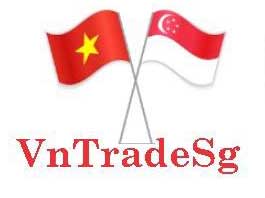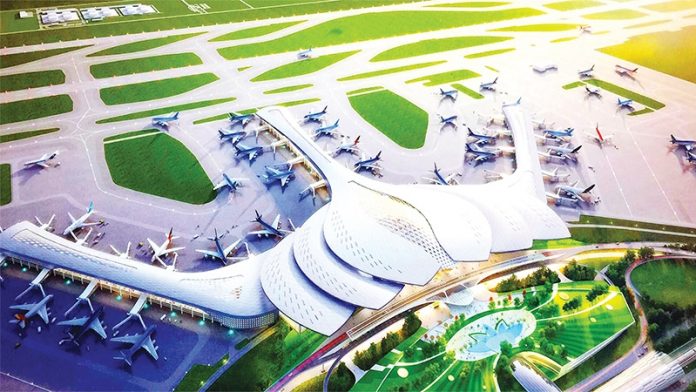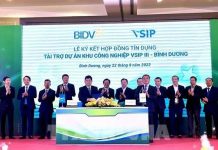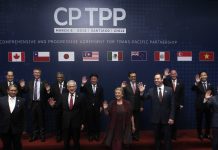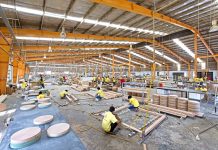Domestic and international private investors are expected to have fresh opportunities to join the long-awaited Long Thanh International Airport project in the near future, with the form of investment to be decided next month.
The Vietnamese government last week issued Resolution No.07/NQ-CP on feasibility study of the first phase of Long Thanh International Airport, asking the State Appraisal Council (SAC) to quicken the process efficiently before submitting it to the prime minister for approval and then for a decision on the investment in March.
Accordingly, the investment form will be chosen based on the classification of investment works and items after appraisal from the SAC, with national defense, national interest, and management in aligned with the civil aviation regulations to be taken into account.
Also, for total investment, funding mobilisation form, technology application, social-economic efficiency, and financial efficiency, the government has asked for further study and implementation in line with the National Assembly’s (NA) Resolution No.95/2019/QH14 leased last year on feasibility study for the airport’s first stage investment project.
This means that the investment form and the potential investor of the project will be decided by that point, thus enabling local and overseas private ventures to join by co-operating with the selected financiers. Meanwhile, international backers who ask for a government loan guarantee as a major condition may have no room to join because there will be no such guarantee for the airport initiative.
A leader of the Ministry of Transport told VIR that, “Domestic and foreign investors can join this important national project by co-operating with the selected investor in some sub-categories such as services, maintenance and repair, catering services, hangars, and airport hotels among others.”
Under Resolution 95, the first stage of the Long Thanh airport project will consist of one runway and one passenger terminal, and sub-categories including aprons, an air traffic control tower, parking lots, air catering, aircraft maintenance, and a fuel supply and waste recycling station, with a capacity of 25 million passengers and 1.2 million tonnes of cargo a year. It is scheduled to be put into operation by 2025 at the latest.
The NA has asked the government to decide the project’s total investment in line with the Law on Public Investment, the regulations on construction, and management and use of public assets, and other relevant rules, ensuring that total investment will not be higher than the $16.3 billion approved in the NA’s Resolution No.94/2015/QH13 enacted in 2015 on adopting the project, with the first phase costing nearly $5 billion.
Earlier, the government proposed that state-run Airports Corporation of Vietnam (ACV) become the investor of the scheme – a likely scenario given that currently there are no other companies more capable than the airport giant for this particular project.
If the arrangement comes to fruition, ACV will have to arrange nearly $5 billion for the first phase of the project. While the corporation has strong financial capacity, $5 billion is still a large amount at a time when ACV is in need of money to invest in other development projects. This means that ACV will have to mobilise funding from other partners.
A corporation official has admitted that even with no government guarantee, ACV will raise funding from partners to ensure project development on schedule.
Thus far, a pack of international businesses have shown interest in the Long Thanh scheme thanks to the growth potential of the burgeoning local aviation market. They include financiers, technology firms, and service providers with famous names like US aircraft giant Boeing, and Swedish greats such as Ulf Rudebark, SEK, SAAB, Ericsson, Asix Communications, and Volvo.
The list is being lengthened as many others from South Korea, Japan, and China are queuing up, including Lotte Engineering and Construction Co., Ltd, and Japan’s Taisei Corporation.
According to Resolution 07, the total area for the first stage has increased from 1,165 hectares to about 1,810ha. The government has requested that the People’s Committee of the southern province of Dong Nai where the airport is located to fast-track site clearance, compensation, and resettlement so as to timely hand over land to the project development as requested by the NA, thus enabling the project to be kicked off in 2021.
Vietnam’s aviation market is highly acknowledged performance-wise, with a growth rate of 10 per cent per annum. The figure is twice as high as that of the region and the wider world, not only for passenger transport but also for logistics. The International Air Transport Association assessed that Vietnam is the fifth fastest-growing aviation market in the world, reaching 150 million passengers by 2035. Last year, ACV’s airports handled an estimated 116 million passengers, up 12 per cent on-year, and surpassing the whole-year target by 3 per cent.
